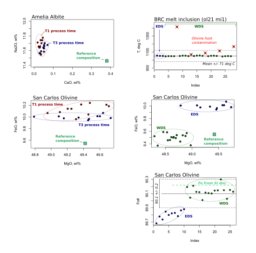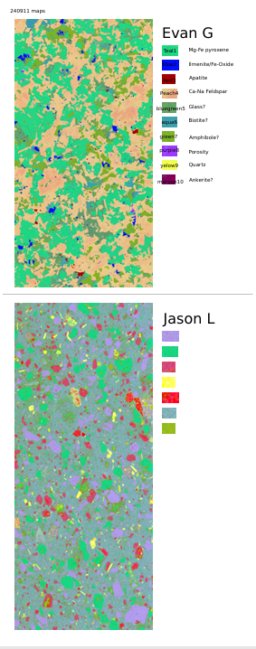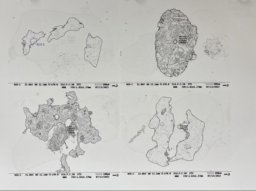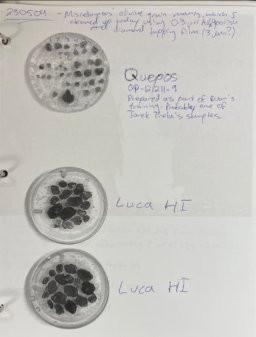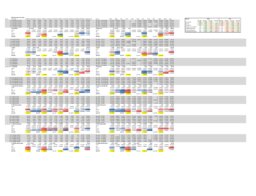
240411 -- Here is what my notes say: Testing to see how EDS compares to my 15 kV/10 nA basalt recipe on WDS. For WDS, using mostly the same recipe for WDS as 231106, but count times are increased from 20/10 to 40/20. 5 replicates of each sample. ZAF, oxides calculating oxygen by difference. For EDS, using 30s acquisition with T3 process time (~30% dead time). Postage stamp sized area analyses as viewed at 900x magnification. WDS calibration takes about 45 minutes. EDS acquisition of standards calculated to be about 11 minutes. Calculated run time for WDS is 2h:41m. Calculated run time for EDS is 28 minutes.
Reprocessed the data to fix some mistakes on 241101. I'm not sure I originally did everything right in DTSA-II, but now it should be correct. The printed-to-pdf spreadsheet is mostly self-explanatory, and I came up with a few metrics (small table in upper right) to reduce the multielement analysis of the materials to a single error score. The cells are shaded green or orange depending on which analysis method "won" or "lost" respectively. Generally, the WDS does do better than the EDS, but I am also led to believe that this difference is not significant for most general petrology use cases.
The plot to the right shows the totals of analyses on the WDS vs the EDS where the analyses were paired randomly (i.e. the first analysis of SI Diopside on the WDS is paired with the first analysis of SI Diopside on the EDS). It turns out that the WDS totals are kind of low, and the EDS totals are kind of high. The low WDS totals can probably be explained by spectrometer misalignment; I don't have an explanation for the high EDS totals.

